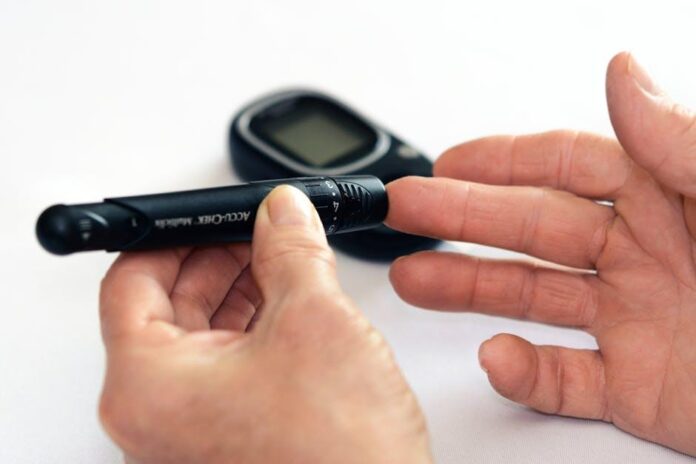
Diabetes Mellitus is a chronic condition that affects millions of people worldwide. It is a metabolic disorder characterized by high blood sugar levels resulting from the body’s inability to produce or use insulin effectively. As such, it is crucial to recognize the warning signs of diabetes mellitus early on to prevent complications and ensure proper management of the condition.
In this article, we will discuss the various warning signs and symptoms of diabetes mellitus, as well as the importance of early detection and treatment.
What is Diabetes Mellitus?
Diabetes Mellitus is a group of diseases that affect how your body uses blood sugar (glucose). Glucose is vital for your health, as it is the main source of energy for your cells and tissues. However, when there is too much glucose in your blood, it can lead to serious health complications.
There are several types of diabetes, but the most common ones are Type 1 and Type 2 diabetes. Type 1 diabetes is an autoimmune disease where the body’s immune system attacks and destroys insulin-producing cells in the pancreas. This results in a lack of insulin production, leading to high blood sugar levels. Type 2 diabetes, on the other hand, is a condition where the body becomes resistant to insulin or does not produce enough insulin to regulate blood sugar levels effectively.
Warning Signs of Diabetes Mellitus
1. Frequent Urination
One of the most common symptoms of diabetes mellitus is frequent urination. When blood sugar levels are high, your kidneys work harder to filter and absorb the excess glucose. This can lead to increased urination, as your body tries to get rid of the excess sugar through urine.
2. Excessive Thirst
Excessive thirst, also known as polydipsia, is another warning sign of diabetes mellitus. When you urinate frequently, you lose more water from your body, which can make you feel dehydrated. This, in turn, can cause you to feel thirsty and drink more fluids to compensate for the loss.
3. Unexplained Weight Loss
Unexplained weight loss is a common symptom of Type 1 diabetes, where the body cannot use glucose for energy and starts burning fat and muscle instead. In Type 2 diabetes, the body may not be able to use insulin effectively, leading to weight loss despite eating more than usual.
4. Fatigue and Weakness
High blood sugar levels can lead to fatigue and weakness, as your body’s cells are not getting enough energy to function properly. This can make you feel tired and lethargic, even if you have had enough rest.
5. Blurred Vision
Blurred vision can occur when high blood sugar levels cause changes in the fluid levels in your eyes. This can affect your ability to focus and see clearly, leading to blurred vision and other eye problems.
6. Slow Wound Healing
Diabetes mellitus can affect your body’s ability to heal wounds and infections. High blood sugar levels can slow down the healing process and make you more susceptible to infections, especially in your feet and legs.
7. Numbness or Tingling in Hands and Feet
Numbness or tingling in your hands and feet can be a sign of nerve damage caused by diabetes mellitus. This condition, known as diabetic neuropathy, can affect your sensory nerves and impair your ability to feel pain, temperature, and touch.
8. Recurring Infections
People with diabetes mellitus are more prone to infections, especially in the skin, urinary tract, and gums. High blood sugar levels can weaken your immune system and make it harder for your body to fight off infections.
9. Increased Hunger
Despite eating more than usual, some people with diabetes mellitus may experience increased hunger. This can be a result of the body not being able to use glucose for energy, leading to a constant feeling of hunger and cravings for high-calorie foods.
Importance of Early Detection and Treatment
Recognizing the warning signs of diabetes mellitus early on is crucial for proper management of the condition and prevention of complications. If left untreated, diabetes mellitus can lead to serious health issues, including heart disease, stroke, kidney failure, and vision problems.
Early detection and treatment of diabetes mellitus can help you maintain healthy blood sugar levels and reduce the risk of complications. This includes making lifestyle changes such as following a balanced diet, exercising regularly, monitoring your blood sugar levels, and taking medications as prescribed by your healthcare provider.
Regular check-ups with your doctor and blood tests can help diagnose diabetes mellitus early and prevent the progression of the disease. If you experience any of the warning signs mentioned above, it is essential to consult your healthcare provider for a proper evaluation and diagnosis.
In conclusion, recognizing the warning signs of diabetes mellitus is crucial for early detection and proper management of the condition. By being aware of these symptoms and seeking medical help when needed, you can prevent complications and lead a healthier, more fulfilling life. Remember to listen to your body and take care of your health to live a long and happy life.












